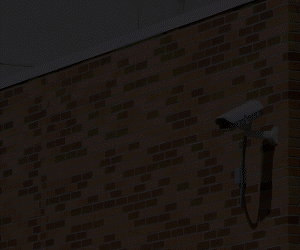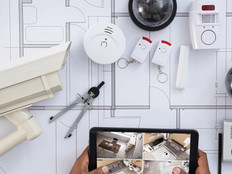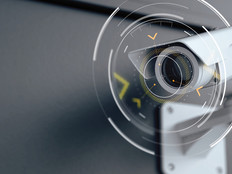What Is Physical Security, and How Does It Protect Schools?
Physical security comprises the technologies and solutions that monitor schools’ attendees and prevent intrusions. This includes tech such as surveillance cameras, environmental sensors, access control systems, alarms, window film and more.
Physical security solutions keep schools safe by alerting school officials to potential dangers, whether those dangers present themselves in the form of physical violence, vaping or unwanted guests.
“It’s a really hard job to be a school administrator and to protect students,” Davito says. “There are a lot of needs beyond academic pursuits that school staff are responsible for.”
With many aspects of physical security to monitor — often, across many buildings and locations — school leaders are turning increasingly to holistic technology solutions to keep K–12 students safe.
DIVE DEEPER: Learn how rural and urban K–12 schools find the funds for physical safety.
How Is Technology Improving K–12 Physical Security?
Physical security now often falls under the umbrella of IT, thanks to advances in technology that are improving schools’ ability to protect staff and students. Whereas, historically, the IT department may have been responsible for surveillance footage, newer technologies go beyond the physical security capabilities of cameras.
Davito notes that more schools are looking for security solutions that also encompass vape detection, access control and more. “We started with cameras, but have been asked by our K–12 customers, in particular, to think about how to tie together what have historically been pretty siloed applications,” he says.
“Between cameras and access control, environmental sensors and vape detectors, our alarms product, our guest product and most recently, our intercom product, there are a lot of different tools we’re making available for school staff.”
Modern dashboards allow necessary personnel, from administrators to school resource officers, to access these technologies from a single-pane-of-glass dashboard on a computer or mobile device. Available via a web browser or application, the dashboard lets school leaders manage their physical security technology in every school building across multiple campuses.
“A lot of folks in the organization need access to this data, and they need just the right data to be able to do their job,” Davito says. “Technology makes it easy to manage those devices, and scale and deliver the information and the alerts that each individual needs.”
How Do Next-Gen Surveillance Cameras Improve School Security?
Next-generation surveillance cameras, connected to a school’s network and powered by artificial intelligence, are being added to school buildings and parking lots to improve school security.
Until recently, Wauconda Community Unit School District in Illinois had cameras only on the inside of most of their buildings, says Tim Burke, the district’s director of safety and security. The exception was the high school, which also had outdoor cameras. This year, additional cameras were installed in “the parking lots and bustling areas” of the district’s junior high schools and elementary schools, he says.
These modern cameras allow IT admins to track someone’s movement within the school building, scan and recognize license plates, and send alerts when threats are detected.
RELATED: What role can modern cameras play as school safety concerns grow?
This year, McHenry Community High School in Illinois is piloting cameras with built-in AI, says Director of Security Art Delgadillo. “If there are a bunch of kids running in a certain direction really fast, it will alert the camera system,” he explains. “It could be a fight, or they could be running from a threat.”
How Do Vape Detectors Improve Schools’ Physical Security?
Vape detectors are becoming a necessary component of schools’ physical security strategies. “Some of the different threats to a student include things like vaping within school bathrooms,” Davito says.
Vaping is a growing problem in K–12 schools, particularly at the middle and high school levels. In fact, there’s been a 20 percent year-over-year increase in teen vaping, with 96 percent of teens who vape identifying it as a problem and 61 percent admitting they’re addicted, according to Verkada’s 2023 Teen Vaping Survey.










